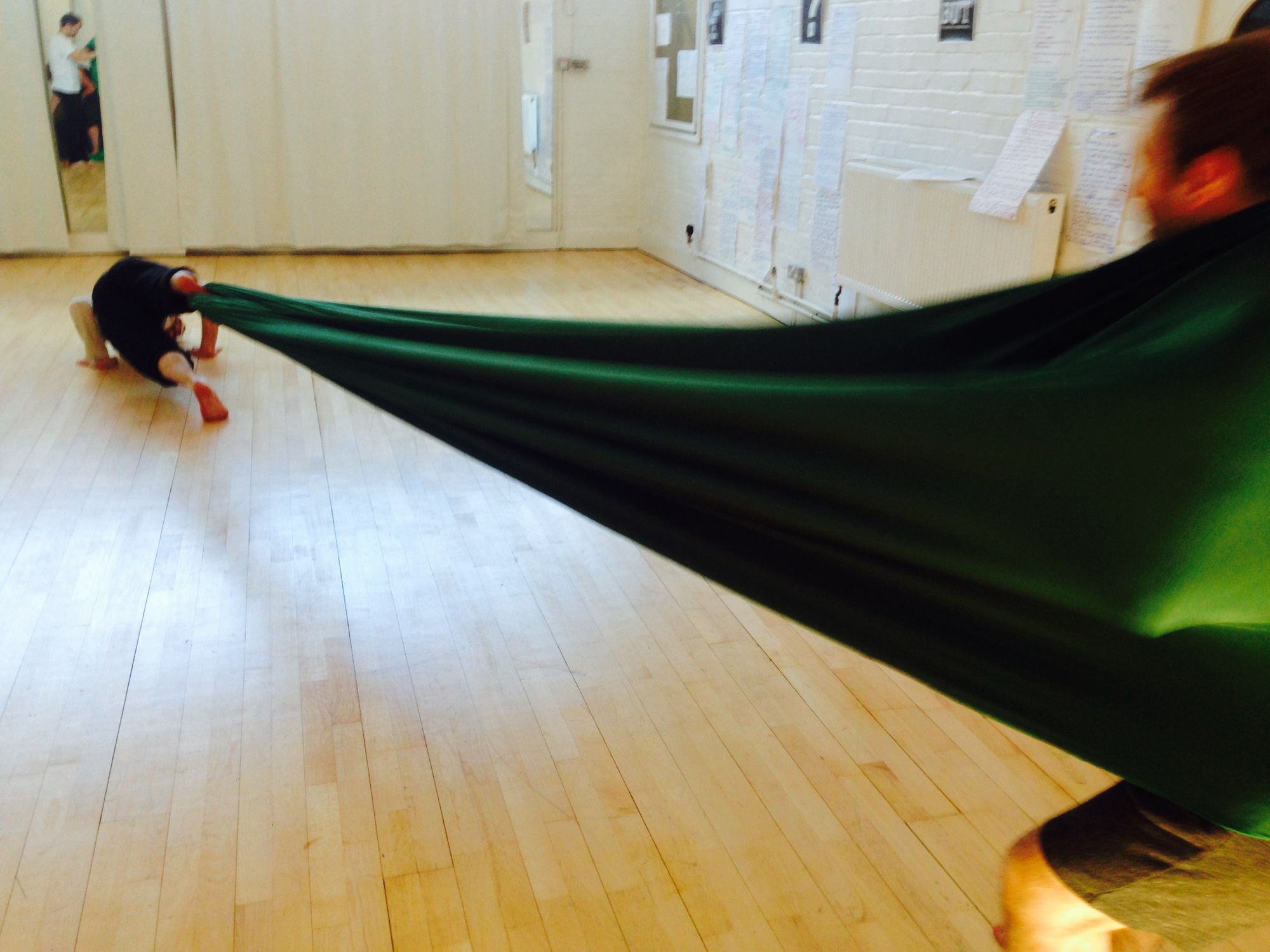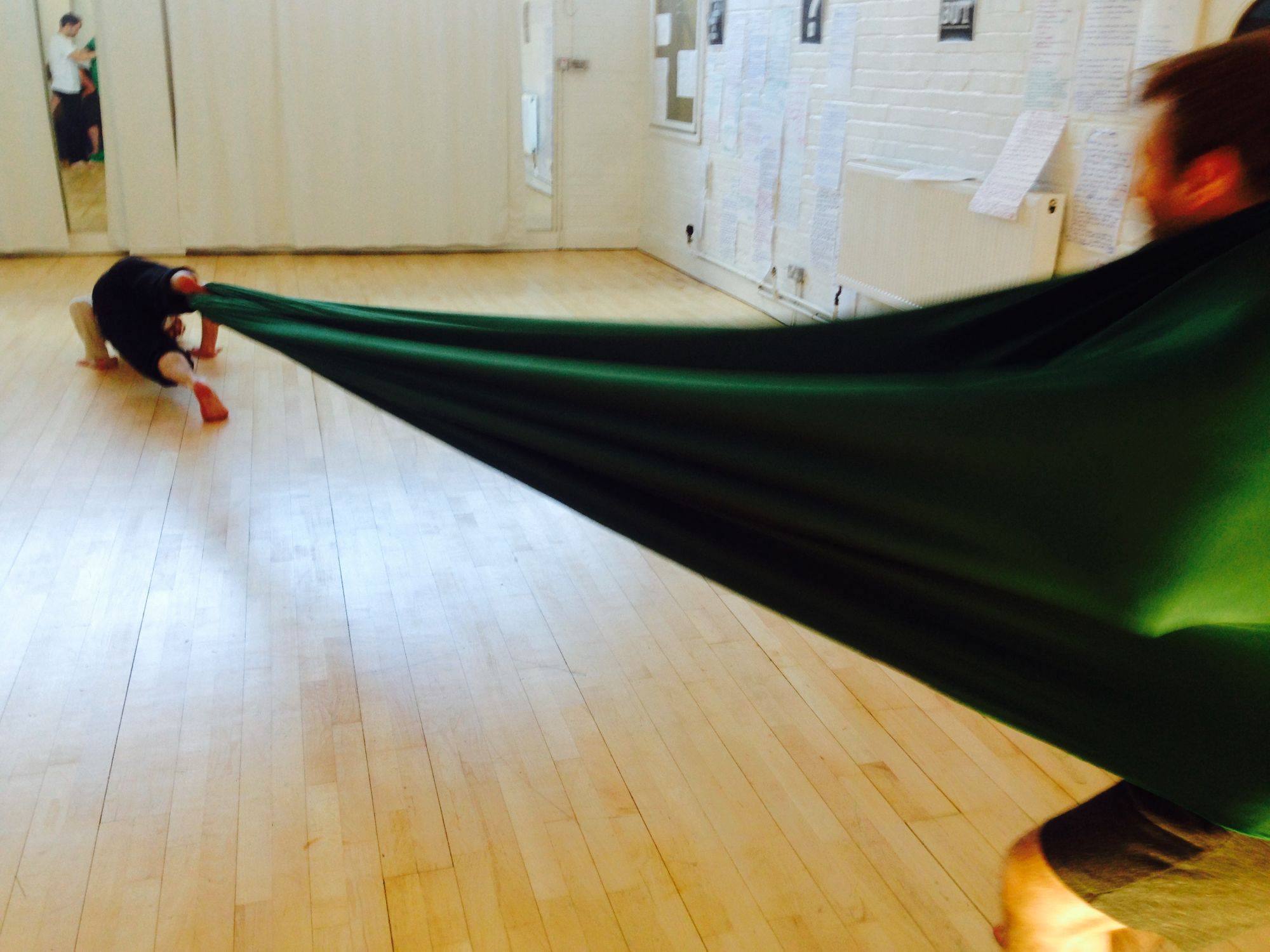Risk in theatre: self-discovery, not a form to fill in when people go up ladders
If you’re asking audiences to take risks in your artworks, building care into your interactive experiences as a creative consideration makes the work better.

Taking risks in theatre -and taking care of audiences while we do that- is a big thing for us. In our immersive and interactive experiences, we ask a lot of our audiences - and we feel a real sense of responsibility for them. We think a lot about hospitality and care - and I’ve also been thinking about risk.
You can listen to Rachel reading the full post here…
To help me formulate some of my thoughts, I chatted with Lou Coleman. Lou’s background is in inclusive practices within the arts; she works as an artist, producer and a Feldenkrais Practitioner (which is how I met her, we were on the same training). Lou has also worked in all kinds of settings to support children, teenagers and their families. As well as being a friend, Lou worked with us back in 2015 on and interactive experience called Invisible Treasure to help us use access and inclusion as creative springboards. Elements of that process have become foundational principles for how we work.
Want to download this and finish reading it another time?
Pop your email in below and it’s yours!
When I was thinking about risk, I remembered a conversation Lou and I had had about risk being subjective. In Invisible Treasure, there were moments where we wanted all audience members to take risks. When we were thinking about how a group of autistic young people and their siblings would approach the experience, there was some pressure to remove all elements of risk, which I felt uncomfortable with - I kind of felt like negotiating risk was central to the show. Lou helped me see risk as something personal and proportionate and helped us find ways of these young people taking risks on their own terms, rather than sanitising the whole experience and depriving them of this central aspect of it.

Risk in theatre as self-discovery
Prior to calling Lou I had my own reasons for why I want risk to be part of the palate for creating an interactive experiences, but Lou’s analysis made me realise that it’s totally central to why FF make work, rather than just being about the dramaturgy of what the audience experience:
It (=risk) challenges our foundations of what we think we know, and how we approach things. And our expectations of how we see the world and how we see the others - it shifts the assumptions that we have about what people can do. If you add an element of risk, they’re having to consider what they’re willing to do, what they’re willing to try, what they’re not willing to try - and actually that’s a really important way of knowing more about yourself.
If our work is about creating spaces for people to discover more about themselves and how they relate to each other and the world, risk is a way of inviting them to discover this, rather than treading the path of what they think they already knew. That isn’t to say that that process shouldn’t be supported. Lou drew on her experiences as Family Support when I asked her how you equip someone to take a risk: “Slowly - and also explaining what’s gonna happen, so managing their expectations.” We talked about the idea of helping people find comfort because, as Lou said, “if you feel comfortable and you feel secure, that’s when you’re gonna learn, that’s when you’re gonna take risks, that’s where the interesting curiosity will push you to.”
Comfortable enough to take a risk
This reminded me of some conversations I had as part of research for another project, about online dating. One person told me that we tend to conflate emotional and physical safety when actually they’re very different. When messaging from her house, where she was surrounded by all her stuff, warm, in comfy clothes etc, she felt physically safe – and this allowed her to take more emotional risks and reveal more. In a bar conversely, she would have felt less physically safe – perhaps on the other side of the city, in shoes that looked great but hurt to walk in, in an environment that is too hot/ cold and where loud music means premature physical proximity in order to hear what the other person is saying. Here, less physical comfort meant less emotional courage.
So perhaps we need to be thinking in a more specific way about the risks we’re asking audience members to take - can we care for them to make them feel comfortable in all the other ways to free their attention up to approach the specific risk we’ve posed? Or if the invitation to take a risk in theatre is met with resistance, how can we address that resistance? How can we find adaptations which don’t simply try to push through the resistance, but find mutually-agreed ways around sticking points?
I am struck again by the fact that care for audiences isn’t a nice, altruistic, ‘snowflakey’ optional extra. It is vital for your piece to work: in many ways, attending to the comfort of your audience is a totally pragmatic action because it makes it more likely that people will engage with what you’ve created. Care is a central element of audience-centric dramaturgy, and we as creators go interactive experiences should be giving it a whole lot more headspace than happens currently. Like access, building care into your work as a creative consideration makes the work better - and by better I mean, what you’re asking the audience is clearer and they face fewer obstacles to immersion.

Lou and I also talked about the infringements of comfort. She pointed me in the direction of Clare Cunningham’s excellent podcast Choreography of Care in which Clare discusses how highly she values privacy (I’m not going to clumsily paraphrase her thoughts here, go listen) and we talked about how the switch to Zoom calls during the pandemic had caused a blur between the comfortable, private domestic sanctuary-space - and the world out there, and that some people experienced this as a risk that they were suddenly expected to take. It struck me that risk without consent isn’t risk, it’s something ugly somewhere between discrimination and oppression. Risk has to be voluntary - at least within a performance context: there is no risk without care. So, when confronted with risk in interactive experiences, how do we give audiences more opportunities to give and withdraw consent?
Risk and care
If there’s a simple take-away from our conversation (rather than the thousand new questions it provoked), it’s that there’s a definite relationship between risk, resistance, comfort and care. In the last few minutes, Lou and I reflected on why we see so few instances of care in the accepted operational practice of the arts sector. “There just isn’t time,” Lou commented - and it’s true, everyone is trying to deliver against targets that don’t have enough flex in them to accommodate the time and attention needed for care. “Everyone wants Change™” she said, invoking the industry of superficial training and accreditation that has sprung up to sell us this new attractive commodity, “but no one wants to change.”
I’m reminded of when I worked in a medium-sized arts organisation, and new ways of working were dismissed as ‘too risky’ - because we had KPIs (‘key performance indicators’ = targets) to meet. It seems that here again risk and care are linked, both prevented by organisational cultures which are overly focussed on targets (and I’m sure this isn’t restricted to the arts). In those organisations -such as the one I worked in- risk was dismissed as an irresponsible luxury extra. I now wonder how often in those conversations the work ‘risk’ could have been replaced with the word ‘care’ - and whether that would have made the need to make a change less easy to dismiss. Whether it’s about how we collaborate with audiences or with our colleagues, centring care feels like it could help us make braver and more humane choices.

